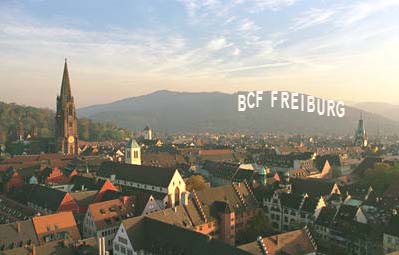Tom Tetzlaff (Institute of Neuroscience and Medicine (INM-6), Computational and Systems Neuroscience, Research Center Jülich, Germany)
"The variability of tidewater-glacier calving - a neural-network model" / Tuesday, March 13, 2012, 17:15 h
The Bernstein Center Freiburg Bernstein Seminar |  |
Tom Tetzlaff Institute of Neuroscience and Medicine (INM-6) Computational and Systems Neuroscience Research Center Jülich, Germany The variability of tidewater-glacier calving - a neural-network model | |
Tuesday, March 13, 2012 17:15 h | Lecture Hall (ground floor) Bernstein Center Freiburg Hansastraße 9A 79104 Freiburg |
Abstract: Iceberg calving at the front of tidewater glaciers has a significant impact on sea-level rise, ocean currents, shipping and offshore oil production. Calving activity is characterised by a large variability in iceberg sizes and inter-event intervals. So far, it is unclear whether this variability is caused by fluctuations in external conditions or by the internal glacier dynamics itself. In my talk, I will present calving-event data obtained from continuous observations of the fronts of two glaciers on Svalbard (Spitsbergen), and show that the distributions of event sizes and inter-event intervals can be reproduced by a simple calving model solely focusing on the mutual interplay between calving and the destabilisation of the glacier front. The event-size distributions of both the field and the model data extend over several orders of magnitude and resemble power laws. In the model, the width of the size distribution increases with the susceptibility of the glacier front. Inter-event interval distributions, in contrast, are insensitive to the susceptibility. Above a critical susceptibility, small perturbations of the glacier result in ongoing self-sustained calving activity. We conclude that broad distributions of event sizes are a general characteristics of glacier-calving dynamics. Even under stationary external (climatic) conditions, calving events of all magnitudes have to be expected. The occurrence of single 'catastrophic' events (collapse of the entire glacier front) must not be interpreted as the consequence of a sudden change in external parameters. The overall shape of the size distribution, however, may well reflect external conditions. Reported observations of fast glacier retreats may be explained by supercritical calving dynamics. | |
Host: Ad Aertsen | |
| The talk is open to the public. Guests are cordially invited! www.bcf.uni-freiburg.de | |
abgelegt unter:
Bernstein Seminar

